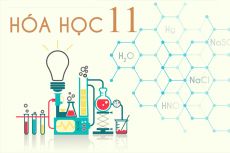Chọn câu có nghĩa gần nhất với câu đã cho: It has been years since I last ate fish.
Suy nghĩ và trả lời câu hỏi trước khi xem đáp án
Lời giải:
Báo saiĐã nhiều năm kể từ lần cuối cùng tôi ăn cá.
A. Tôi đã không ăn cá trong nhiều năm.
B. Trong nhiều năm, tôi chỉ ăn cá. => sai nghĩa
C. Tôi thích ăn cá trong nhiều năm. => sai nghĩa
D. Đó là cá mà tôi đã ăn trong nhiều năm. => sai nghĩa
It has been years since I last ate fish.
=>I have not eaten fish for years.
Câu hỏi liên quan
-
Choose the best answer to complete the sentence.
Regional development activities have been carried out _______ ASEAN cooperation
-
Water scarcity is fast becoming one of the major limiting factors in world crop production. In many areas, poor agricultural practices have led to increasing desertification and the loss of formerly arable lands. Consequently, those plants species that are well adapted to survival in dry climates are being looked at for an answer in developing more efficient crops to grow on marginally arable lands.
Plants uses several mechanisms to ensure their survival in desert environments. Some involve purely mechanical and physical adaptations, such as the shape of the plant's surface, smaller leaf size, and extensive root systems. Some of the adaptations are related to chemical mechanisms. Many plants, such as cacti, have internal gums and mucilages which give them water-retaining properties. Another chemical mechanism is that of the epicuticular wax layer. This wax layer acts as an impervious cover to protect the plant. It prevents excessive loss of internal moisture. It also protects the plant from external aggression, which can come from inorganic agents such as gases, or organic agents which include bacteria ant plant pets.
Researchers have proposed that synthetic waxes with similar protective abilities could be prepared based on knowledge of desert plants. If successfully developed, such a compound could be used to greatly increase a plant's ability to maintain health in such adverse situations as inadequate water supply, limited fertilizers availability, attacked by pets, and poor storage after harvestingAll of the following are examples of an adverse situation for crops EXCEPT...............
-
During the seventeenth and eighteenth centuries, almost nothing was written about the contributions of women during the colonial period and the early history of the newly formed United States. Lacking the right to vote and absent from the seats of power, women were not considered an important force in history. Anne Bradstreet wrote some significant poetry in the seventeenth century, Mercy Otis Warren produced the host contemporary history of the American Revolution, and Abigail Adams penned Important letters showing she exercised great political Influence over her husband, John, tiie second President of the United States. But little or no notice was taken of these contributions. During those centuries, women remained Invisible In history books.
Throughout the nineteenth century, this lack of visibility continued, despite the efforts of female authors writing about women, These writers, like most of their male counterparts, were amateur historians. Their writings were celebratory in nature, and they were uncritical in their selection and use of sources.
During the nineteenth century, however, certain feminists showed a keen sense of history by keeping records of activities in which women were engaged. National, regional, and local women's organizations compiled accounts of their doings. Personal correspondence, newspaper clippings, and souvenirs were saved and stored. These sources from the core of the two greatest collections of women’s history In the United States one at the Elizabeth and Arthur Schleslnger Library at Radcliffe College, and the other the Sophia Smith Collection at Smith College. Such sources have provided valuable materials for later Generations of historians.
Despite the gathering of more information about ordinary women during the nineteenth Century, most of the writing about women conformed to the "great women" theory of History, just as much of mainstream American history concentrated on "great men," To demonstrate that women were making significant contributions to American life, female authors singled out women leaders and wrote biographies, or else important women produced their autobiographies. Most of these leaders were Involved in public life as reformers, activists working for women's right to vote, or authors, and were not representative at all of the great of ordinary woman. The lives of ordinary people continued, generally, to be untold in the American histories being published.The word "they” in the 2nt paragraph refers to
-
Ranked as the number one beverage consumed worldwide, tea takes the lead over coffee in both popularity and production with more than 5 million metric tons of tea produced annually. Although much of this tea is consumed in Asia, European and African countries, the United States drinks it fair share. According to estimates by the Tea Council of the United States, tea is enjoyed by no less than half of the U.S population on any given day. Black tea or green tea - iced, spiced, or instant - tea drinking has spurred a billion - dollar business with major tea produces in Africa and South America and throughout Asia.
Tea is made from the leaves of an evergreen plant, Camellia sinensis, which grows tall and lush in tropical regions. On tea plantation, the plant is kept trimmed to approximately four feet high, and as new buds called flush appear, they are plucked off by hand. Even in today's world of modern agricultural machinery, hand harvesting continues to be preferred method. Ideally, only the top two leaves and bud should be picked. This new growth produces the highest quality tea.
After being harvested, tea leaves are laid out on long drying racks, called withering racks, for 18 to 20 hours. During this process, the tea softens and becomes limp. Next, depending on the type of the tea being produced, the leaves may be crushed or chopped to release flavor, and then steamed to retain their green color, and the fermentation process is skipped. Producing black teas requires fermentation during which the tea leaves begin to darken. After fermentation, black tea is dried in vats to produce its rich brown or black color.
No one knows when or how tea became popular, but legend has it that tea as a beverage was discovered in 2737 B.C. by Emperor Shen Nung of China when leaves from Camellia dropped into his drinking water as it was boiling over a fire. As the story goes, Emperor Shen Nung drank the resulting liquid and proclaimed that the drink to be most nourishing and refreshing. Though this account cannot be documented, it is thought that tea drinking probably originated in China and spread to other parts of Asia, then to Europe, and ultimately to America colonies around 1650.
With about half of the caffeine content as coffee, tea is often chosen by those who want to reduce, but not necessarily eliminate their caffeine intake. Some people find that tea is less acidic than coffee and therefore easier on the stomach. Others have become interested in tea drinking since the National Cancer Institute published its findings on the antioxidant properties of tea. But whether tea is enjoyed for its perceived health benefits, its flavor, or as a social drink, teacups continue to be filled daily with the world's most popular beverage.According to the passage, what is TRUE about the origin of tea drinking?
-
Fill in each numbered blank with one suitable word or phrase.
ASEAN Handicraft Promotion and Development Association (AHPADA) was established as a result of a Workshop on Handicraft for Export which was (1) _____ by the Royal Thai Government in February 1981 in Bangkok. AHPADA was formed as a forum for both the government and private sectors that are concerned with meeting and complementing each other in the promotion and development of handicrafts (2) _____. AHPADA is affiliated to the ASEAN and the World Craft Council. The (3) _____ members were Thailand, Malaysia, the Philippines and Indonesia. Singapore and Brunei join in a little (4) _____. Cambodia, Lao, Myanmar and Vietnam joined in September 1999.AHPADA's objectives are: To take common approach to develop and promote the marketing of crafts (5) _____ and outside the ASEAN Region. To operate as a main point of promotion of ASEAN handicrafts and raw (6) _____ required-for production, trade fairs and exhibitions. To strengthen and improve the status of craftspeople. To create employment opportunities especially in the rural areas. To (7) _____ traditional craft skills within the context of conservation of cultural heritage. To educate and create awareness and appreciation of the authentic handicrafts of ASEAN Countries. And to build up an archive of ASEAN CRAFT information.
With the recent economic downturn in (8) _____ ASEAN Countries, AHPADA's objectives are more relevant than they have ever been before. Most producers are among the rural areas and (9) _____ majority of them are very small entrepreneurs. AHPADA works at both national level through the national focal points and at the international level through the Board of AHPADA and the Regional Secretariat which is permanently based in Bangkok, Thailand. (10) _____ 1981 AHPADA has been able to act as a catalyst and initiators in the promotion and development of ASEAN CRAFTS through seminars, workshops and exhibitions, often in partnership with several multinational and international organizations.
(4) _____
-
Choose the best answer to complete the sentence.
A combined gross domestic _______ of the member countries of ASEAN has grown at an average rate of around 6% per year.
-
New surveys suggest that the technological tools we use to make our lives easier are killing our leisure time. We are working longer hours, taking fewer and shorter vacations (and when we do go away, we take our cell phones, PDAs, and laptops along). And, we are more stressed than ever as increased use of e-mail, voice mail, cell phones, and the Internet is destroying any idea of privacy and leisure.
Since the Industrial Revolution, people have assumed that new labor-saving devices would free them from the burdens of the workplace and give them more time to grow intellectually, creatively, and socially -exploring the arts, keeping up with current events, spending more time with friends and family, and even just ''goofing off''.
But here we are at the start of the 21st century, enjoying one of the greatest technological boom times in human history, and nothing could be further from the truth. The very tools that were supposed to liberate us have bound us to our work and study in ways that were inconceivable just a few years ago. It would seem that technology almost never does what we expect.
In 'the old days', the lines between work and leisure time were markedly clearer. People left their offices at a predictable time, were often completely disconnected from and out of touch with their jobs as they traveled to and from work, and were off-duty once they were home. That is no longer true. In today's highly competitive job market, employers demand increased productivity, expecting workers to put in longer hours and to keep in touch almost constantly via fax, cell phones, e-mail, or other communications devices. As a result, employees feel the need to check in on what is going on at the office, oven on days off. They feel pressured to work after hours just to catch up on everything they have to do. Workers work harder and longer, change their work tasks more frequently, and have more and more reasons to worry about job security.
Bosses, colleagues, family members, lovers, and friends expect instant responses to voice mail and e-mail messages. Even college students have become bound to their desks by an environment in which faculty, friends, and other members of the college community increasingly do their work online. Studies of time spent on instant messaging services would probably show staggering use.
This is not what technology was supposed to be doing for us. Now technologies, from genetic research to the Internet, offer all sorts of benefits and opportunities. But, when new tools make life more difficult and stressful rather than easier and more meaningful - and we are, as a society, barely conscious of it - then something has gone seriously awry, both with our expectations for technology and our understanding of how it should benefit us.With the phrase "at a predictable time", the author implies that ......................
-
Choose the option among A, B, C or D that best fits the blank space in the following passage:
"Association of Southeast Asian Nations (ASEAN), regional alliance of ten independent countries that (1)……; stability and economic growth in Southeast Asia. The organization also encourages cultural exchanges between its members. ASEAN was founded in August 1967 by Malaysia, Thailand, and the (2)….. of Indonesia, Singapore, and the Philippines. Brunei joined the alliance after (3)….. independence from the United Kingdom in 1984. Vietnam was admitted (4)…. its seventh member in 1995. Laos and Myanmar (formerly Burma) joined ASEAN in 1997, and Cambodia became (5)…… of the alliance in 1999. The ASEAN secretariat, a (6) ….. office that administers the organization's activities, is located in Jakarta, Indonesia.
Its Principal objectives, outlined in the Bangkok Declaration (1967), were to (7)…… economic growth and promote regional peace and stability. A joint forum with Japan was established in 1977, and a (8)….. agreement with the European Community was signed in 1980. During the late 1980s and early 1990s, ASEAN (9)…… an important role in mediating the civil war in Cambodia. In January 1992 ASEAN members agreed to establish a free-trade area and to cut tariffs on nonagricultural goods over a 15-year period (10)______ in 1993."8. A joint forum with Japan was established in 1977, and a (8)….. agreement with the European Community was signed in 1980.
-
Fill in each numbered blank with one suitable word or phrase.
ASEAN Handicraft Promotion and Development Association (AHPADA) was established as a result of a Workshop on Handicraft for Export which was (1) _____ by the Royal Thai Government in February 1981 in Bangkok. AHPADA was formed as a forum for both the government and private sectors that are concerned with meeting and complementing each other in the promotion and development of handicrafts (2) _____. AHPADA is affiliated to the ASEAN and the World Craft Council. The (3) _____ members were Thailand, Malaysia, the Philippines and Indonesia. Singapore and Brunei join in a little (4) _____. Cambodia, Lao, Myanmar and Vietnam joined in September 1999.AHPADA's objectives are: To take common approach to develop and promote the marketing of crafts (5) _____ and outside the ASEAN Region. To operate as a main point of promotion of ASEAN handicrafts and raw (6) _____ required-for production, trade fairs and exhibitions. To strengthen and improve the status of craftspeople. To create employment opportunities especially in the rural areas. To (7) _____ traditional craft skills within the context of conservation of cultural heritage. To educate and create awareness and appreciation of the authentic handicrafts of ASEAN Countries. And to build up an archive of ASEAN CRAFT information.
With the recent economic downturn in (8) _____ ASEAN Countries, AHPADA's objectives are more relevant than they have ever been before. Most producers are among the rural areas and (9) _____ majority of them are very small entrepreneurs. AHPADA works at both national level through the national focal points and at the international level through the Board of AHPADA and the Regional Secretariat which is permanently based in Bangkok, Thailand. (10) _____ 1981 AHPADA has been able to act as a catalyst and initiators in the promotion and development of ASEAN CRAFTS through seminars, workshops and exhibitions, often in partnership with several multinational and international organizations.
(6) _____
-
Commuting is the practice of travelling a long distance to a town or city to work each day, and then travelling home again in the evening. The word commuting comes from commutation ticket, a US rail ticket for repeated journeys, called a season ticket in Britain. Regular travellers are called commuters.
The US has many commuters. A few, mostly on the East Coast commute by train or subway, but most depend on the car. Some leave home very early to avoid the traffic jams, and sleep in their cars until their office opens. Many people accept a long trip to work so that they can live in quiet "bedroom communities" away from the city, but another reason is 'white flight'. In the 1960s most cities began to desegregate their schools, so that there were no longer separate schools for white and black children. Many white families did not want to send their children to desegregated schools, so they moved to the suburbs, which have their own schools, and where, for various reasons, few black people live.
Millions of people in Britain commute by car or train. Some spend two or three hours a day travelling, so that they and their families can live in suburbia or in the countryside. Cities are surrounded by commuter belts. Part of the commuter belt around London is called the stock broker belt because it contains houses where rich business people live. Some places are becoming dormitory towns, because people sleep there but take little part in local activities.
Most commuters travel to and from work at the same time, causing the morning and evening rush hours, when buses and trains are crowded and there are traffic jams on the roads. Commuters on trains rarely talk to each other and spend their journey reading, sleeping or using their mobile phones, though this is not popular with other passengers. Increasing numbers of people now work at home some days of the week, linked to their offices by computer, a practice called telecommuting.
Cities in both Britain and the US are trying to reduce the number of cars conning into town each day. Some companies encourage car pooling (called car sharing in Britain), an arrangement for people who live and work near each other to travel together. Some Us cities have a public service that helps such people to contact each other, and traffic lanes are reserved for car-pool vehicles. But cars and petrol/gas are cheap in the US, and many people prefer to drive alone because it gives them more freedom. In Britain many cities have park-and-rids schemes, car parks on the edge of the city from which buses take drivers into the centre.The word "it" in the last paragraph refers to...................
-
Choose the letter A, B, C or D to answer these following questions:
The ASEAN Declaration states that the aims and purposes of the Association are: (1) to accelerate the economic growth, social progress and cultural development in the region through joint endeavors in the spirit of equality and partnership in order to strengthen the foundation for a prosperous and peaceful community of Southeast Asian nations, and (2) to promote regional peace and stability through abiding respect for justice and the rule of law in the relationship among countries in the region and adherence to the principles of the United Nations Charter. In 1995, the ASEAN Heads of State and Government re-affirmed that “Cooperative peace and shared prosperity shall be the fundamental goals of ASEAN.”
TAC stated that ASEAN political and security dialogue and cooperation should aim to promote regional peace and stability by enhancing regional resilience. Regional resilience shall be achieved by cooperating in all fields based on the principles of self-confidence, self-reliance, mutual respect, cooperation, and solidarity, which shall constitute the foundation for a strong and viable community of nations in Southeast Asia.
Although ASEAN States cooperate mainly on economic and social issues, the organization has a security function, with a long-discussed program for confidence-building measures and for establishing a nuclear-weapon-free zone in Southeast Asia, with the objective of implementing ASEAN’s 1971 Declaration on a Zone of Peace, Freedom and Neutrality (ZOPFAN), and a Southeast Asia Nuclear Weapon-Free Zone (SEANWFZ), which would be a component of ZOPFANWhich one is NOT TRUE, according to the passage?
-
Learning means acquiring knowledge or developing the ability to perform new behaviors. It is common to think of learning as something that takes place in school, but much of human learning occurs outside the classroom, and people continue to learn throughout their lives.
Even before they enter school, young children learn to walk, to talk, and to use their hands to manipulate toys, food, and other objects. They use all of their senses to learn about the sights, sounds, tastes, and smells in their environments. They learn how to interact with their parents, siblings, friends, and other people important to their world. When they enter school, children learn basic academic subjects such as reading, writing, and mathematics. They also continue to learn a great deal outside the classroom. They learn which behaviors are likely to be rewarded and which are likely to be punished. They learn social skills for interacting with other children. After they finish school, people must learn to adapt to the many major changes that affect their lives, such as getting married, raising children, and finding and keeping a job.
Because learning continues throughout our lives and affects almost everything we do, the study of learning is important in many different fields. Teachers need to understand the best ways to educate children. Psychologists, social workers, criminologists, and other human- service workers need to understand how certain experiences change people's behaviors.
Employers, politicians, and advertisers make use of the principles of teaming to influence the behavior of workers, voters, and consumers.
Learning is closely related to memory, which is the storage of information in the brain.
Psychologists who study memory are interested in how the brain stores knowledge, where this storage takes place, and how the brain later retrieves knowledge when we need it. In contrast, psychologists who study learning are more interested in behavior and how behavior changes as a result of a person's experiences.
There are many forms of learning, ranging from simple to complex. Simple forms of learning involve a single stimulus. A stimulus is anything perceptible to the senses, such as a sight, sound, smell, touch, or taste. In a form of learning known as classical conditioning, people learn to associate two stimuli that occur in sequence, such as lightning followed by thunder. In operant conditioning, people learn by forming an association between a behavior and its consequences (reward or punishment). People and animals can also learn by observation - that is, by watching others perform behaviors. More complex forms of learning include learning languages, concepts, and motor skills
According to the pasage, which of the following is learning in broad view comprised of?
-
We live in a world of tired, sleep deprived people. In his book Counting Sheep, Paul Martin - a behavioural biologist - describes a society which is just too busy to sleep and which does not give sleeping the importance it deserves. Modern society has invented reasons not to sleep. We are now a 24/7 society where shops and services must be available all hours. We spend longer hours at work than we used to, and more time getting to work.
Mobile phones and email allow us to stay in touch round the clock and late-night TV and the Internet tempt us away from our beds. When we need more time for work or pleasure, the easy solution is to sleep less. The average adult sleeps only 6.2 hours a night during the week, whereas research shows that most people need eight or even eight and a half to feel at their best. Nowadays, many people have got used to sleeping less than they need and they live in an almost permanent state of'sleep debt'.
Until the invention of the electric light in 1879 our daily cycle of sleep used to depend on the hours of daylight. People would get up with the sun and go to bed at nightfall. But nowadays our hours of sleep are mainly determined by our working hours (or our social life) and most people are woken up artificially by an alarm clock. During the day caffeine, the world's most popular drug, helps to keep us awake. 75% of the world's population habitually consume caffeine, which up to a point masks the symptoms of sleep deprivation.
What does a chronic lack of sleep do to us? As well as making us irritable and unhappy as humans, it also reduces our motivation and ability to work. This has serious Implications for society in general. Doctors, for example, are often chronically sleep deprived, especially when they are on'night call', and may got less than three hours'sleep. Lack of sleep can seriously impair their mood, judgment, and ability to take decisions. Tired engineers, in the early hours of the morning, made a series of mistakes with catastrophic results. On our roads and motorways lack of sleep kills thousands of people every year. Tests show that a tired driver can be just as dangerous as a drunken driver. However, driving when drunk is against the law but driving when exhausted isn't As Paul Martin says, it is very ironic that we admire people who function on very little sleep instead of criticizing them for being irresponsible, Our world would be a much safer, happier place if everyone, whatever their job, slept eight hours a nightQuestion 6: Which of the following is TRUE, according to the last paragraph?
-
The issue of equality for women in British society first attracted national attention in the early 20th century, when the suffragettes won for women the right to vote. In the 1960s feminism became the subject of intense debate when the women's liberation movement encouraged women to reject their traditional supporting role and to demand equal status and equal rights with men in areas such as employment and pay.
Since then, the gender gap between the sexes has been reduced. The Equal Pay Act of 1970, for instance, made it illegal for women to be paid less than men for doing the same work, and in 1975 the Sex Discrimination Act aimed to prevent either sex having an unfair advantage when applying for jobs. In the same year the Equal Opportunities Commission was set up to help people claim their rights to equal treatment and to publish research and statistics to show where improvements in opportunities for women need to be made. Women now have much better employment opportunities, though they still tend to get less well-paid jobs than men, and very few are appointed to top jobs in industry.
In the US the movement that is often called the "first wave of feminism' began in the mid 1800s. Susan B. Anthony worked for the right to vote, Margaret Sanger wanted to provide women with the means of contraception so that they could decide whether or not to have children, and Elizabeth Blackwell, who had to fight for the chance to become a doctor, wanted women to have greater opportunities to study. Many feminists were interested in other social issues.
The second wave of feminism began in the 1960s. Women like Betty Friedan and Gloria Steinem became associated with the fight to get equal rights and opportunities for women under the law. An important issue was the Equal Rights Amendment (ERA), which was intended to change the Constitution. Although the ERA was not passed, there was progress in other areas. It became illegal for employers, schools, clubs, etc. to discriminate against women. But women still find it hard to advance beyond a certain point in their careers, the so-called glass ceiling that prevents them from having high-level jobs. Many women also face the problem of the second shift, i.e. the household chores.
In the 1980s, feminism became less popular in the us and there was less interest in solving the remaining problems, such as the fact that most women still earn much less than men.
Although there is still discrimination, the principle that it should not exist is widely accepted.
It can be inferred from paragraph 1 that in the 19th century ......................
-
The issue of equality for women in British society first attracted national attention in the early 20th century, when the suffragettes won for women the right to vote. In the 1960s feminism became the subject of intense debate when the women's liberation movement encouraged women to reject their traditional supporting role and to demand equal status and equal rights with men in areas such as employment and pay.
Since then, the gender gap between the sexes has been reduced. The Equal Pay Act of 1970, for instance, made it illegal for women to be paid less than men for doing the same work, and in 1975 the Sex Discrimination Act aimed to prevent either sex having an unfair advantage when applying for jobs. In the same year the Equal Opportunities Commission was set up to help people claim their rights to equal treatment and to publish research and statistics to show where improvements in opportunities for women need to be made. Women now have much better employment opportunities, though they still tend to get less well-paid jobs than men, and very few are appointed to top jobs in industry.
In the US the movement that is often called the "first wave of feminism' began in the mid 1800s. Susan B. Anthony worked for the right to vote, Margaret Sanger wanted to provide women with the means of contraception so that they could decide whether or not to have children, and Elizabeth Blackwell, who had to fight for the chance to become a doctor, wanted women to have greater opportunities to study. Many feminists were interested in other social issues.
The second wave of feminism began in the 1960s. Women like Betty Friedan and Gloria Steinem became associated with the fight to get equal rights and opportunities for women under the law. An important issue was the Equal Rights Amendment (ERA), which was intended to change the Constitution. Although the ERA was not passed, there was progress in other areas. It became illegal for employers, schools, clubs, etc. to discriminate against women. But women still find it hard to advance beyond a certain point in their careers, the so-called glass ceiling that prevents them from having high-level jobs. Many women also face the problem of the second shift, i.e. the household chores.
In the 1980s, feminism became less popular in the us and there was less interest in solving the remaining problems, such as the fact that most women still earn much less than men.
Although there is still discrimination, the principle that it should not exist is widely accepted.Which of the following is true according to the passage?
-
Read the following passage and mark the letter A, B, C, or D on your answer sheet to indicate the correct answer to each of the questions.
Scientists do not yet thoroughly understand just how the body of an individual becomes sensitive to a substance that is harmless or even wholesome for the average person. Milk, wheat, and egg, for example, rank among the most healthful and widely used foods. Yet these foods can cause persons sensitive to them to suffer greatly. At first, the body of the individual is not harmed by coming into contact with the substance. After a varying interval of time, usually longer than a few weeks, the body becomes sensitive to it, and an allergy has begun to develop. Sometimes it's hard to figure out if you have a food allergy, since it can show up so many different ways. Your symptoms could be caused by many other problems. You may have rashes, hives, joint pains mimicking arthritis, headaches, irritability, or depression. The most common food allergies are to milk, eggs, seafood, wheat, nuts, seeds, chocolate, oranges, and tomatoes. Many of these allergies will not develop if these foods are not fed to an infant until her or his intestines mature at around seven months. Breast milk also tends to be protective. Migraines can be set off by foods containing tyramine, phenathylamine, monosodium glutamate, or sodium nitrate. Common foods which contain these are chocolate, aged cheeses, sour cream, red wine, pickled herring, chicken livers, avocados, ripe bananas, cured meats, many Oriental and prepared foods (read the labels!). Some people have been successful in treating their migraines with supplements of B-vitamins, particularly B6 and niacin. Children who are hyperactive may benefit from eliminating food additives, especially colorings, and foods high in salicylates from their diets. A few of these are almonds, green peppers, peaches, tea, grapes. This is the diet made popular by Benjamin Feingold, who has written the book “Why your Child is Hyperactive”. Other researchers have had mixed results when testing whether the diet is effective.
What can be inferred about babies from this passage?
-
Read the following passage and mark the letter A, B, C, or D on your answer sheet to indicate the correct answer to each of the questions:
Most weddings in Japan start with a religious ceremony in which usually only family members attend. Afterwards, a banquet is customarily held to which many people, including friends and colleagues, are invited. To celebrate the happy occasion, guests give the bride and groom goshuugi – gift money in special envelopes. Goshuugi from friends is usually 20,000 yen or 30,000 yen.
A typical Japanese wedding party starts when the bride and groom enter the banquet hall together, and take their seats on a slightly raised platform facing their guests. Invited guests are seated closer to the bride and groom, with family and relatives seated further in back. The bride's and groom's bosses usually give congratulatory speeches then their friends sing in celebration. Other wedding highlights include a candle ceremony where the couple holds a candle while greeting their guests at each table, and the cutting of the wedding cake. Afterwards, the bride and groom thank their parents with a speech, then leave to end the party.
In the past, dishes that supposedly brought good fortune, such as prawns and sea breams, were served in abundance. So much of the food was ordered that guests ended up taking the surplus home. Today, the majority of the weddings serve just enough for everyone. Additionally, before leaving, guests would traditionally receive souvenir gifts called hikidemono.
Many wedding ceremonies take place at wedding halls or hotels. Rough estimates show that it costs about 3 million yen to host a wedding party for 80 guests. During Japan's economic bubble, overseas weddings and flamboyant receptions with special effects, such as smoke machines and having the bride and groom fly in on gondolas, were very popular. But these days, couples choose to tie the knot in various ways, from not having any ceremony to having a modest affair, or still going all out.How were the wedding dishes in the past different from those of today?
-
Although they are an inexpensive supplier of vitamins, minerals, and high-quality protein, eggs also contain a high level of blood cholesterol, one of the major causes of heart diseases. One egg yolk, in fact, contains a little more than two-thirds of the suggested daily cholesterol limit. This knowledge has caused egg sales to plummet in recent years, which in turn has brought about the development of several alternatives to eating regular eggs. One alternative is to eat substitute eggs. These egg substitutes are not really eggs, but they look somewhat like eggs when they are cooked. They have the advantage of having low cholesterol rates, and they can be scrambled or used in baking. One disadvantage, however, is that they are not good for frying, poaching, or boiling. A second alternative to regular eggs is a new type of egg, sometimes called 'designer' eggs. These eggs are produced by hens that are fed low-fat diets consisting of Ingredients such as canola oil, flax, and rice bran. In spite of their diets, however, these hens produce eggs that contain the same amount of cholesterol as regular eggs. Yet, the producers of these eggs claim that eating their eggs will not raise the blood cholesterol in humans.
Egg producers claim that their product has been portrayed unfairly. They cite scientific studies to back up their claim. And, in fact, studies on the relationship between eggs and human cholesterol levels have brought mixed results. It may be that it is not the type of egg that is the main determinant of cholesterol but the person who is eating the eggs. Some people may be more sensitive to cholesterol derived from food than other people. In fact, there is evidence that certain dietary fats stimulate the body's production of blood cholesterol. Consequently, while it still makes sense to limit one's intake of eggs, even designer eggs, it seems that doing this without regulating dietary fat will probably not help reduce the blood cholesterol level.According to the passage, one yolk contains approximately what fraction of the suggested daily limit for human consumption of cholesterol?
-
The Influence of Advertising on Pricing
Advertising makes an immense difference in the popularity of a product. Studies have shown that consumers usually pay more for advertised products than non-advertised products. As a result, the marketing and advertising industry is a multibillion-dollar-a-year business. Local commercials can cost as little as several hundred dollars to produce, while national companies have been known to spend hundreds of thousands of dollars on a single commercial. Interestingly, the source for these expensive commercials is the consumers who view the advertisements from the comfort of their living rooms. Companies influence the prices that consumers pay in two ways.
When consumers purchase any product, they are obviously paying for the cost of manufacturing the product. However, they are also paying for the advertising campaign devised to convince consumers to buy the product. The more costly the advertising campaign, the higher the price paid by consumers. Companies are allowed to set these high prices because consumers have shown that they will continue to pay them. For instance, a multinational chain of coffee shops significantly raised its prices a few years ago, due in no small part to an expensive national advertising campaign. While regular customers noticed and were not fond of the hike, one was quoted as saying, “I doubt it will make an impact [on consumers]. It won’t change my habit." Indeed, it did not; the company experienced record sales in spite of the fact its prices were higher than its competitors'.
Another way advertising tends to affect product pricing is seen in the arena of perceived value to the consumers. The perceived value is the worth that consumers assign to a product. Studies show that often the advertising for a product determines its value more than the quality or necessity of the product itself. One way a company may take advantage of this perceived value is by running commercials during prime time. These ads are usually much more expensive than others. For example, a national commercial that ran during a popular American show cost close to $745,000 to run for thirty seconds. If people watching the show perceive that the product is more valuable simply because it was advertised during prime time, they are often willing to pay higher prices. So, whether it is seen in the cost of the commercials or the advertiser-assigned value, it is obvious that advertising drives product pricing and directly affects consumers.Which of the following can be inferred about pricing and advertising?
-
New surveys suggest that the technological tools we use to make our lives easier are killing our leisure time. We are working longer hours, taking fewer and shorter vacations (and when we do go away, we take our cell phones, PDAs, and laptops along). And, we are more stressed than ever as increased use of e-mail, voice mail, cell phones, and the Internet is destroying any idea of privacy and leisure.
Since the Industrial Revolution, people have assumed that new labor-saving devices would free them from the burdens of the workplace and give them more time to grow intellectually, creatively, and socially -exploring the arts, keeping up with current events, spending more time with friends and family, and even just ''goofing off''.
But here we are at the start of the 21st century, enjoying one of the greatest technological boom times in human history, and nothing could be further from the truth. The very tools that were supposed to liberate us have bound us to our work and study in ways that were inconceivable just a few years ago. It would seem that technology almost never does what we expect.
In 'the old days', the lines between work and leisure time were markedly clearer. People left their offices at a predictable time, were often completely disconnected from and out of touch with their jobs as they traveled to and from work, and were off-duty once they were home. That is no longer true. In today's highly competitive job market, employers demand increased productivity, expecting workers to put in longer hours and to keep in touch almost constantly via fax, cell phones, e-mail, or other communications devices. As a result, employees feel the need to check in on what is going on at the office, oven on days off. They feel pressured to work after hours just to catch up on everything they have to do. Workers work harder and longer, change their work tasks more frequently, and have more and more reasons to worry about job security.
Bosses, colleagues, family members, lovers, and friends expect instant responses to voice mail and e-mail messages. Even college students have become bound to their desks by an environment in which faculty, friends, and other members of the college community increasingly do their work online. Studies of time spent on instant messaging services would probably show staggering use.
This is not what technology was supposed to be doing for us. Now technologies, from genetic research to the Internet, offer all sorts of benefits and opportunities. But, when new tools make life more difficult and stressful rather than easier and more meaningful - and we are, as a society, barely conscious of it - then something has gone seriously awry, both with our expectations for technology and our understanding of how it should benefit us.Tho word "They" in the fourth paragraph refers to ..............











